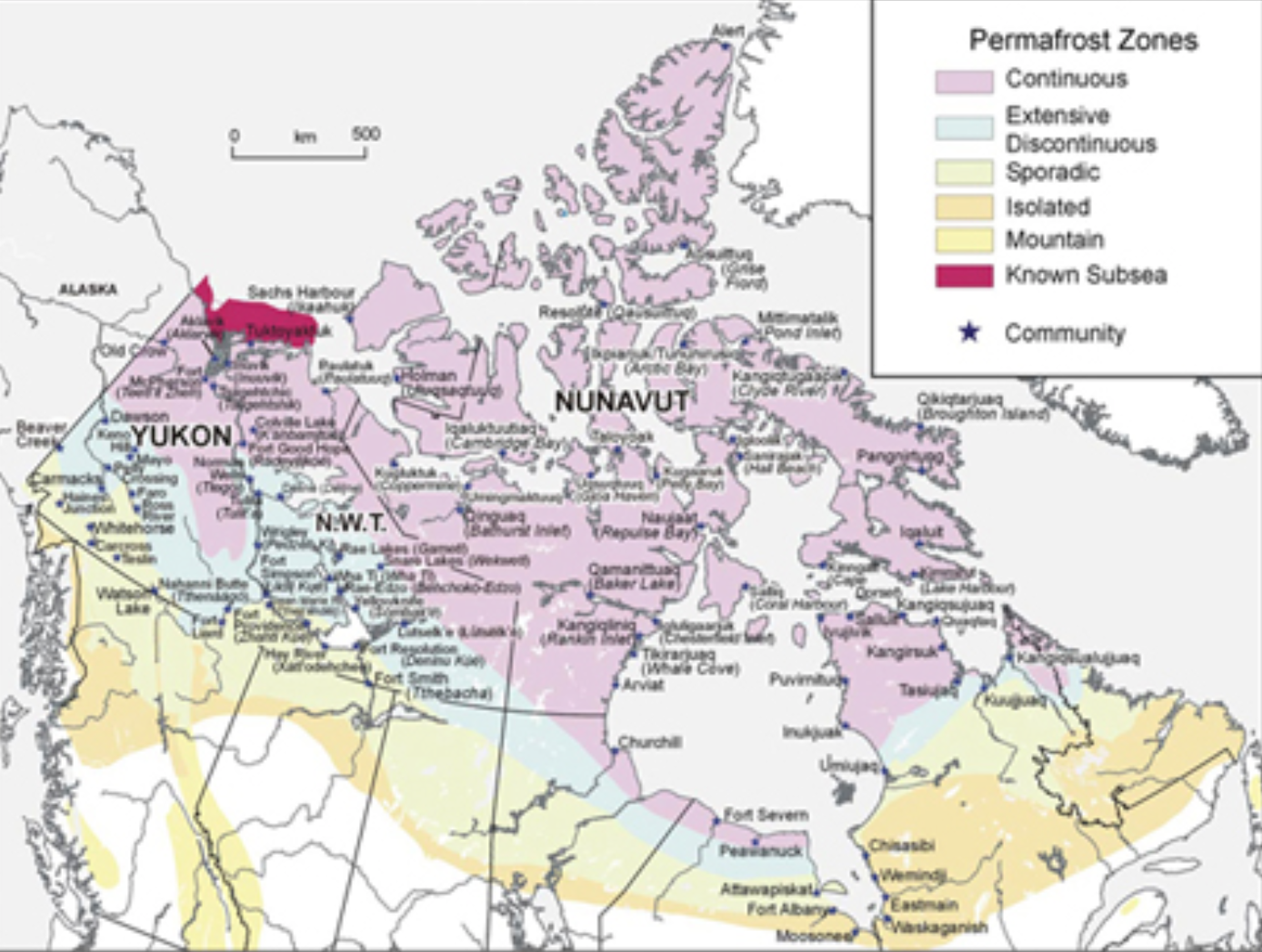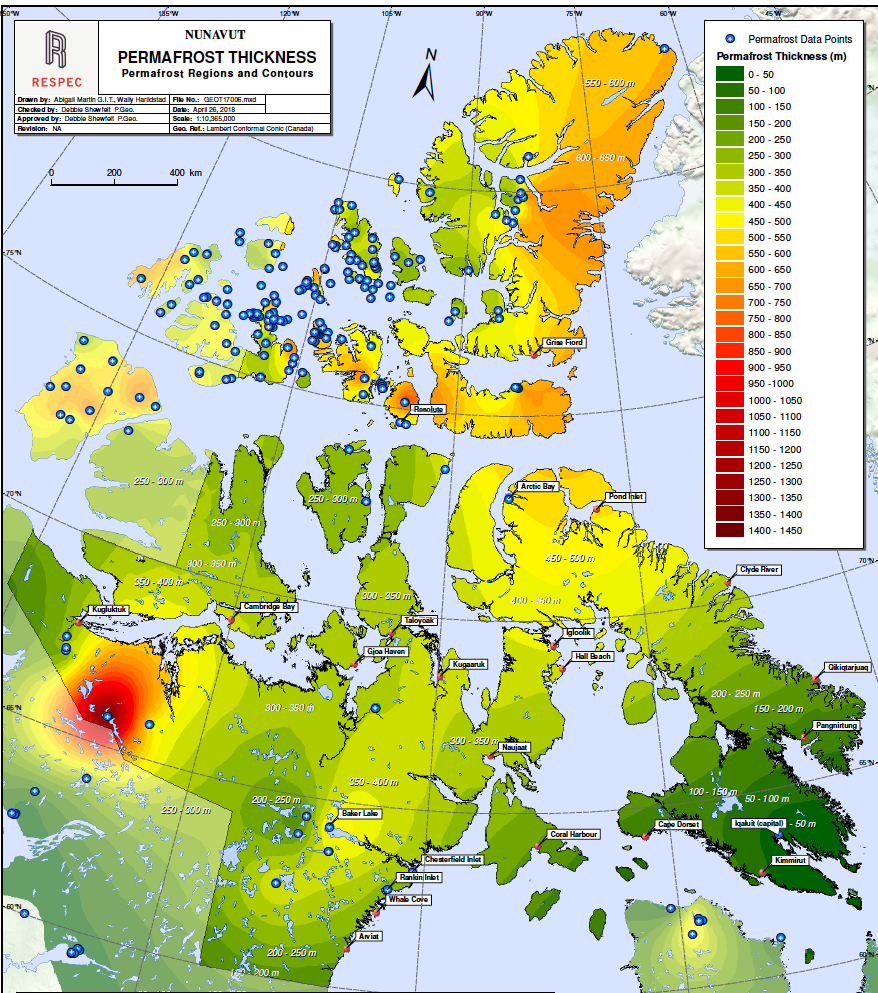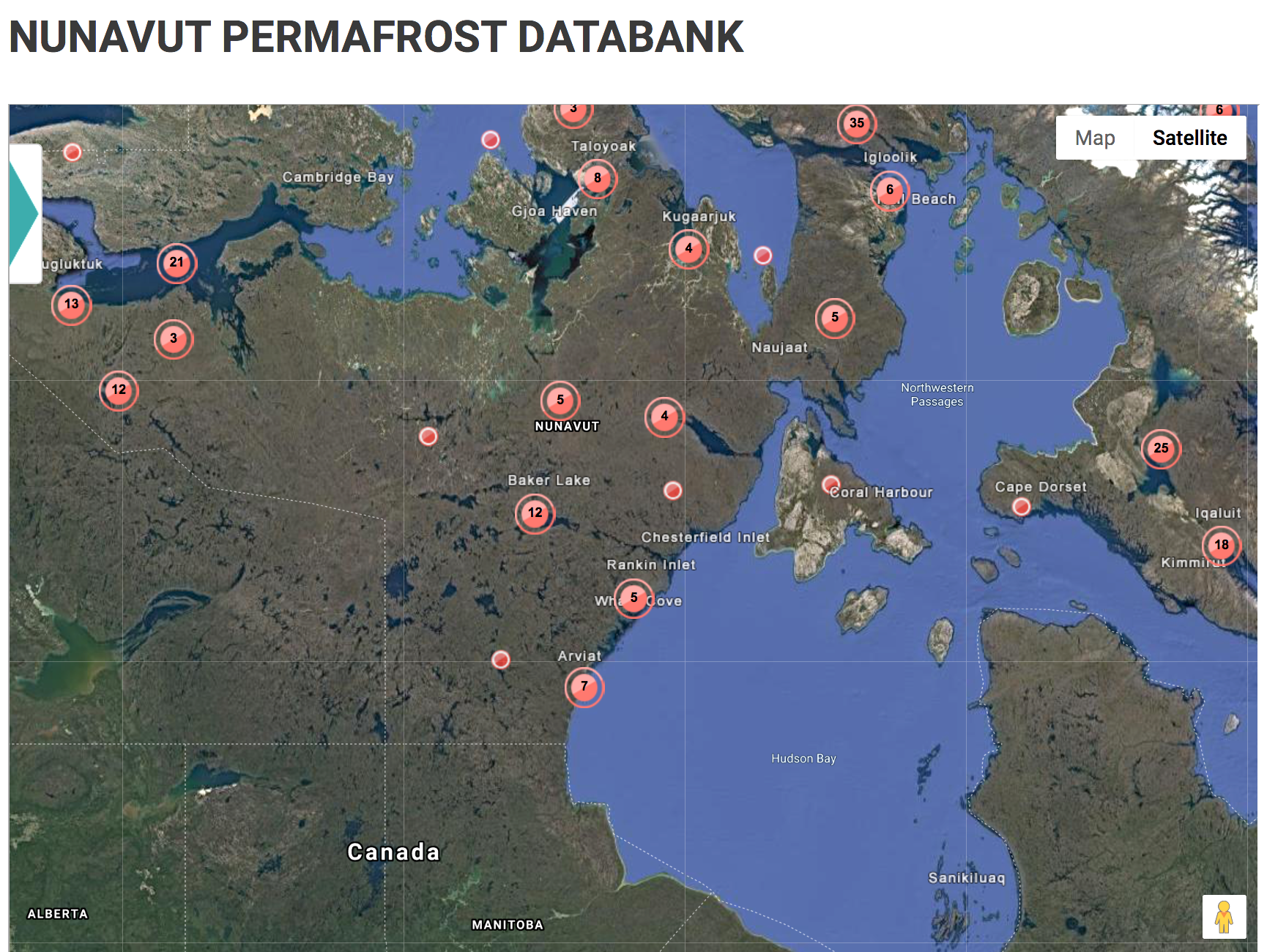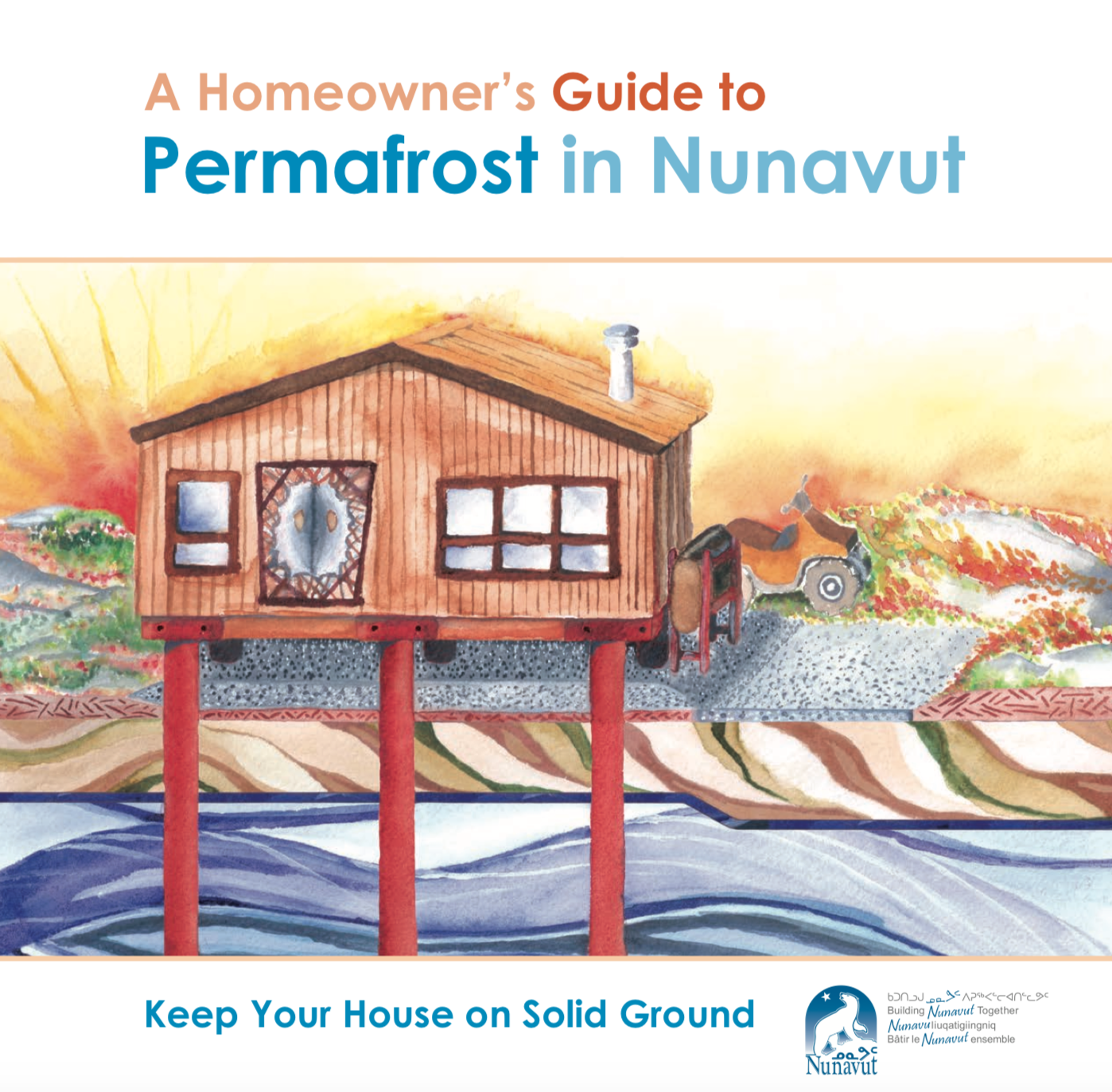Permafrost Monitoring
Permafrost is ground that has been frozen for at least two years. In Nunavut, all of the ground consists of continuous permafrost, meaning that the permafrost layer stays frozen all year round.

With climate change, one of the impacts is that Arctic temperatures are starting to increase. As the temperature increases, permafrost can start to thaw.

Infrastructure (buildings, roads, bridges, airport runways, etc.) is built on permafrost. Frozen soils are more stable than unfrozen soils. The way we build on permafrost is important for creating stable structures that will last a long time.
There are a few different ways we can build on permafrost. If permafrost starts to thaw and the buildings are not built properly for the type of ground or building, then buildings can move, shift, or slant.
How climate change savvy are you at home? Click on the picture and find out!
Melting permafrost is a big issue for homeowners, business owners and government.
The Nunavut Permafrost Databank contains permafrost information on the range of projects occurring in Nunavut communities in one central, user-friendly location.

Information includes temperature and depth of permafrost data, best practices and guidelines for building on permafrost.
We recommend that you contact the organization that owns the data for more information on any specific project.

For more information, see the Homeowner’s Guide to Permafrost in Nunavut

Copyright © All Rights Reserved


